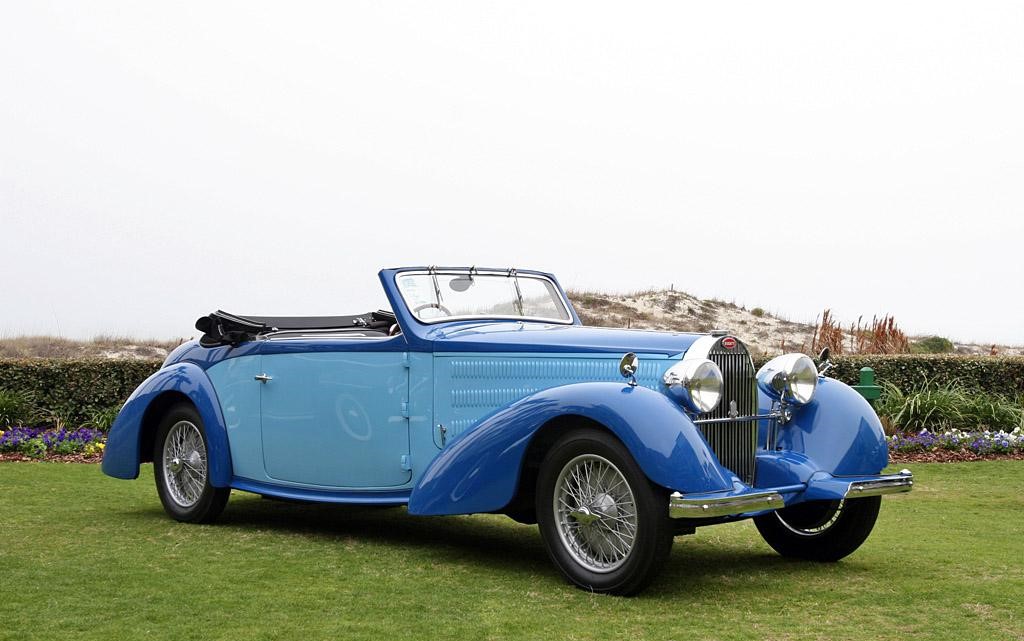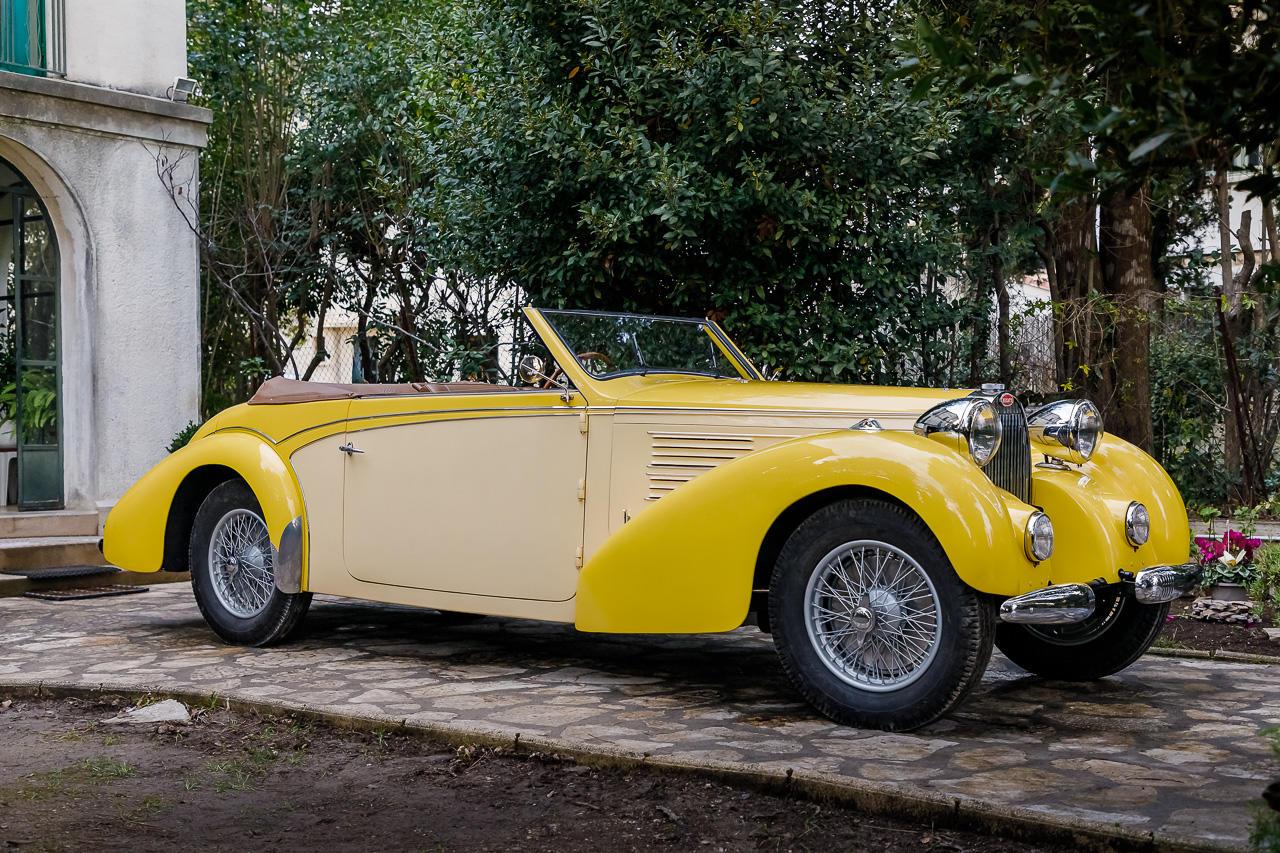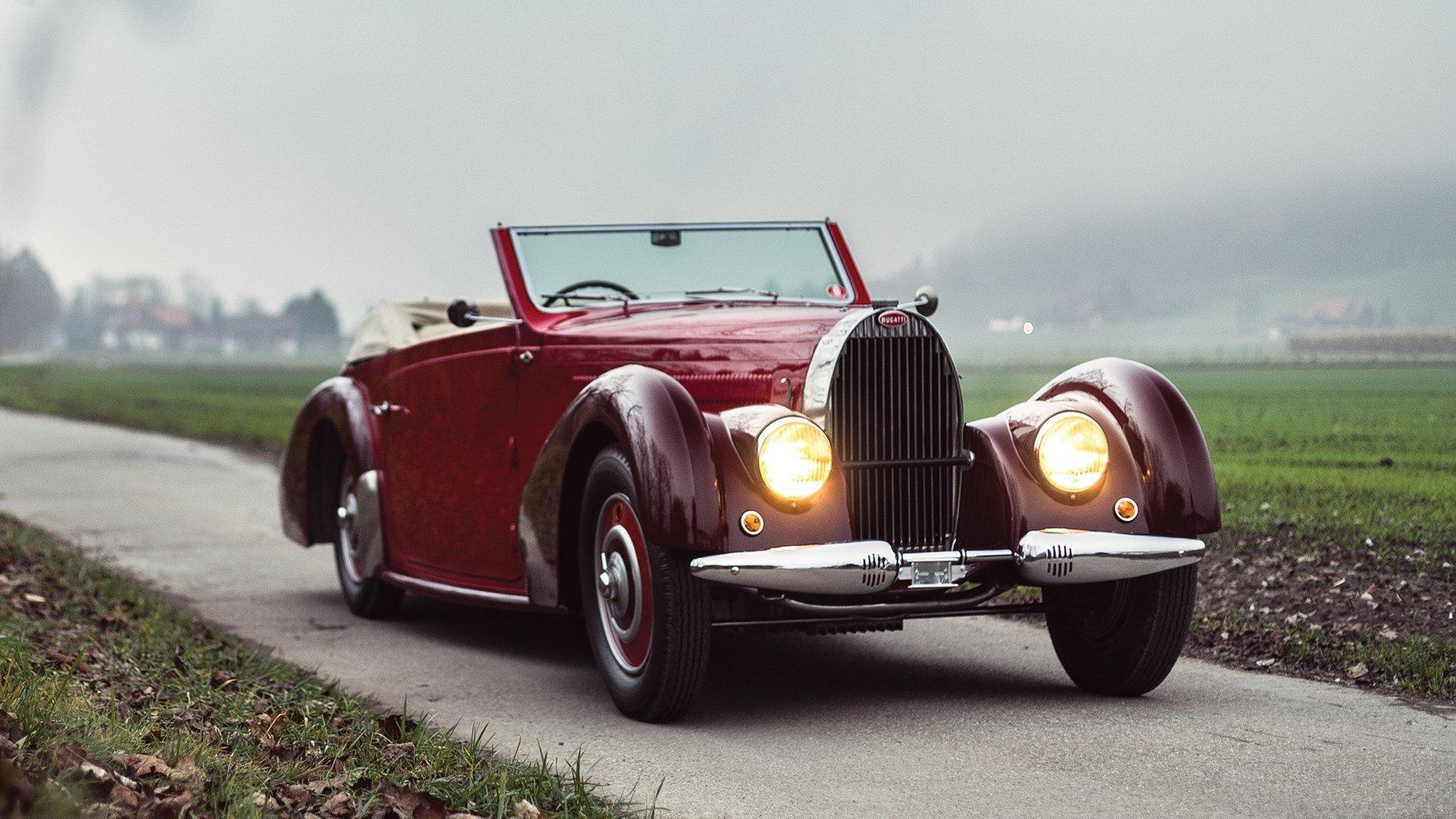1939 Bugatti 57C Stelvio

The descriptions of the Classic Cars in the Directory were partly generated or supplemented with the help of artificial intelligence (AI). The content may occasionally not always be entirely accurate or factually correct despite careful checking.
The Bugatti 57C Stelvio 1939 is a masterpiece of automotive engineering, blending elegant design with robust technical specifications. Powered by a 3.3-liter engine with a compressor, this classic car boasts impressive speed and acceleration.
The engine is a straight-eight layout, with an overhead camshaft and a Roots supercharger. This configuration delivers 160 horsepower at 5,000 rpm, making it capable of reaching speeds of up to 120 mph. The supercharger increases intake pressure and, as a result, creates more horsepower, while the camshaft offers precise control over the valve timing, ensuring optimal engine performance in all conditions.
The Bugatti 57C Stelvio 1939 has a four-speed manual transmission and a rear-wheel-drive layout, with a spiral bevel differential that enhances handling and stability. The suspension includes front independent transverse leaf-sprung suspension and a live rear axle with semi-elliptic leaf springs, ensuring smooth and comfortable rides on any terrain.
The car's braking system is hydraulic, with servo-assistance, and its steering is a worm and sector system that offers sharp and accurate response. The tires are 6.50 x 16 on wire wheels, providing excellent grip and steering dynamics.
The Bugatti 57C Stelvio 1939 is also notable for its aerodynamic design, featuring a long, tapered bonnet that enhances the car's speed and performance. The bodywork is sleek and curvaceous, with classic lines and art deco details that evoke the glamour and sophistication of the era.
Inside, the car offers a luxurious and spacious cabin, with leather seats and a wooden dashboard. The car's instrumentation includes a tachometer, oil pressure, and temperature gauges, and an ammeter. The car is also equipped with a hydraulic jack and a tool kit, making it both practical and convenient.
In conclusion, the Bugatti 57C Stelvio 1939 is a marvel of engineering and design, combining exceptional technical specifications with sophisticated aesthetics. Its powerful engine, precise handling, and elegant styling make it a beloved classic car, appreciated by car enthusiasts and collectors worldwide.
Milestones
- 1934: Bugatti Type 57 introduced as a replacement for the Type 49 - 1935: Supercharged Type 57C introduced - 1937: Bugatti 57S introduced with increased power and improved suspension - 1938: Bugatti 57C Stelvio introduced as a variant of the 57S with coachwork by Carrosserie Gangloff - 1939: Bugatti 57C Stelvio featured at the Geneva Motor Show - 1939: World War II begins, halting production and ending further development of the Type 57 series. - 1947: Ettore Bugatti dies, marking the end of the Bugatti family's involvement with the brand. - 2009: Bugatti Veyron 16.4 Grand Sport unveiled as a successor to the Type 57 series.Technical
• Engine: 3,257 cc straight-eight engine • Power: 160 horsepower • Top speed: 100 mph • Transmission: Four-speed manual gearbox • Suspension: Front independent suspension with double wishbones, and rear live axle with semi-elliptic leaf springs • Brakes: Hydraulic drum brakes • Steering: Worm and sector • Body: Two-door sports roadster • Dimensions: 4,400 mm (length) x 1,710 mm (width) x 1,430 mm (height) • Weight: 1,400 kg • Production: Only 17 units produced • Rarity: Considered to be one of the most valuable and sought-after classic cars in the world.



